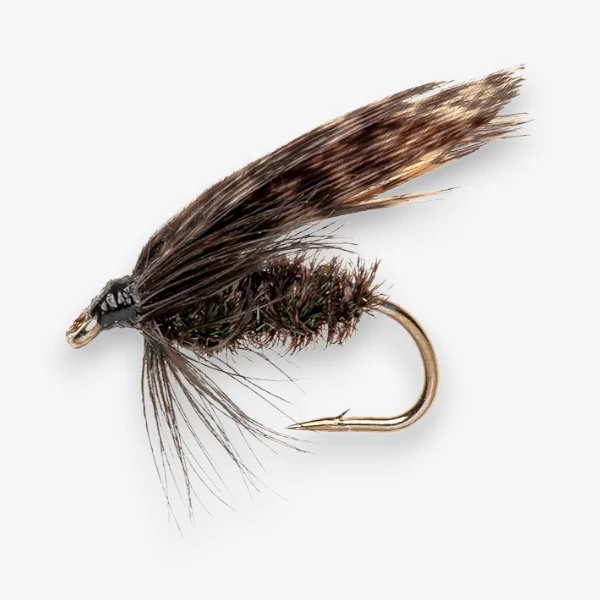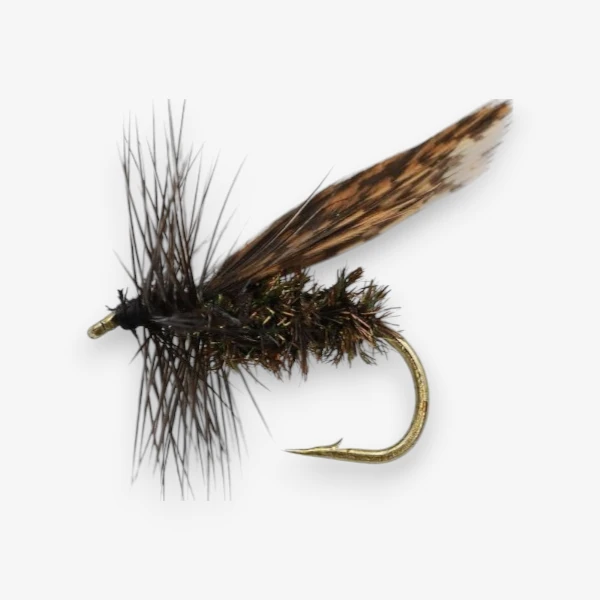Alderfly
Description
Overview: The Alderfly is a small, dark aquatic insect found near slow-moving rivers, ponds, and lakes, particularly in areas with silty or muddy bottoms. Resembling a mix of a caddisfly and a damselfly, Alderflies are an important food source for trout during their aquatic larval stage and their brief adult life. They are most active in late spring and early summer, with their emergence providing excellent fishing opportunities for anglers.
Larval Stage (Nymph): Alderfly larvae are elongated, measuring 3/4 to 1 1/2 inches in length, with segmented bodies that range from light tan to brown and have distinctive feathery gill filaments along their sides. Found in soft-bottomed aquatic environments, they are a favorite meal for trout. Nymph patterns tied on hook sizes 10 to 14 work well, especially when fished near the bottom with a slow dead-drift or slight jigging motion. Focus on areas with silty substrates or backwater pools.
Adult Stage (Dry): Adult Alderflies are small to medium-sized insects, typically 1/2 to 1 inch long, with soft, dark brown to black bodies and smoky, veined wings that fold over their back. Dry fly patterns tied on hook sizes 12 to 14 can effectively mimic adults. They are weak fliers and often fall onto the water, struggling on the surface. Fish these patterns with a subtle twitch or dead drift, focusing on calm water near the edges of lakes or slow-moving streams.
Hatch Chart
Subscribe to view hatch locations. Hatch data is available for all species.


